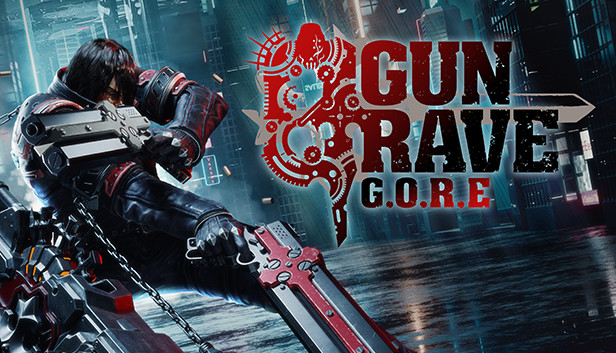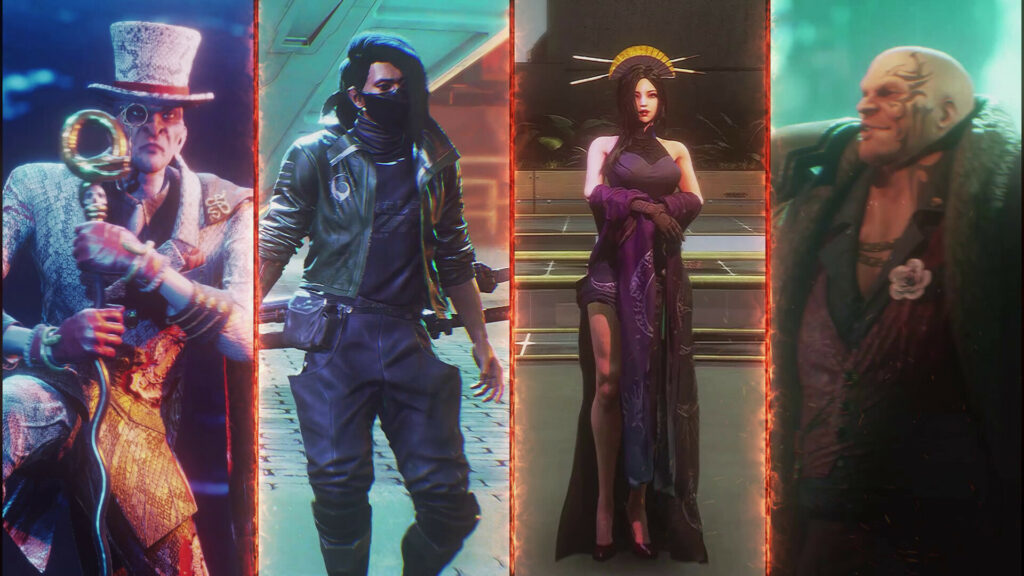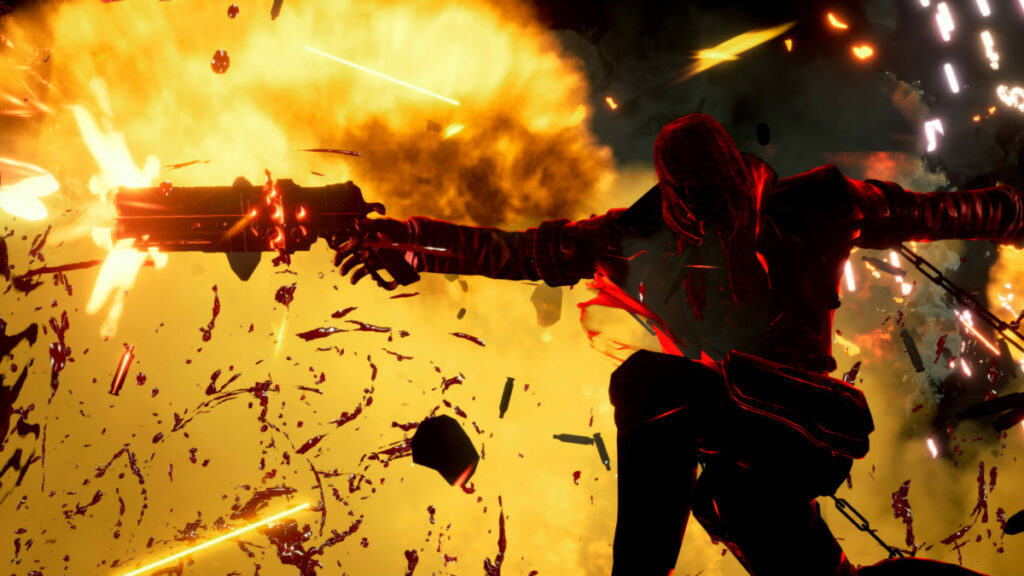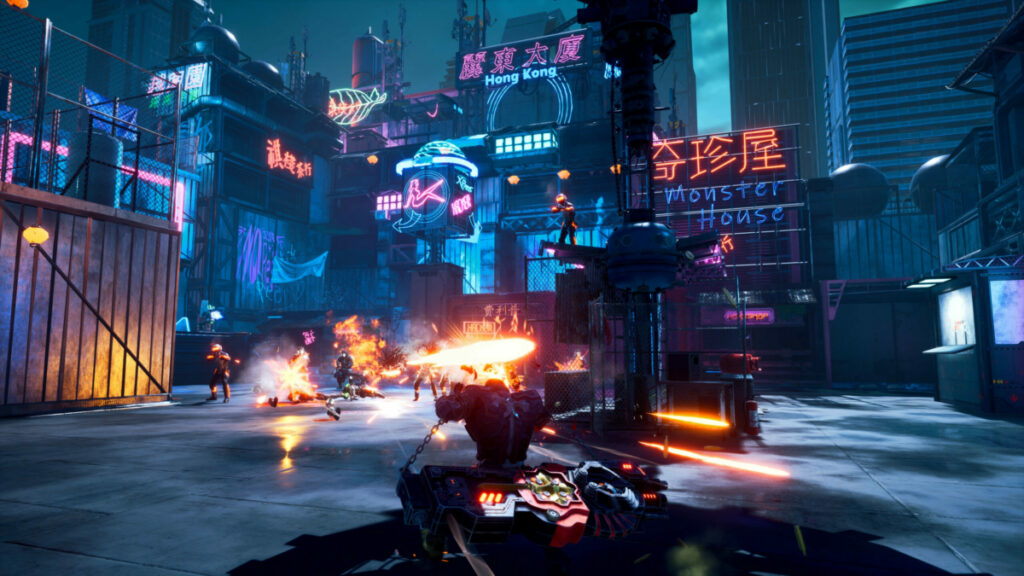Everything we know about Gungrave G.O.R.E
Gungrave G.O.R.E blasts out next week!

Like a bat out of hell, Grave awakens from his untimely slumber. Enraged, angered, and a tad bit cynical, Grave is seething in hatred, and he has every right to be so. Wrongfully betrayed and coldly shot dead, he is resurrected through science to avenge himself and serve justice. Like its protagonist, Gungrave G.O.R.E is back.
The future. A time of villainy and mad science. Science has a way of bettering life, and destroying it. For the malevolent forces of the world, there is SEED. SEED is an alien substance, which becomes a a drug, and a source for unimaginable power through the manipulation of genetics. In a city rife with corruption, an elite organization plan to use SEED for their own plans. Enter Grave, a hitman from the worst nightmares possible. Resurrected by SEED, Grave continues his pursuit of revenge against those that have wronged him, earning the reputation for being The Gunslinger of Resurrection. Armed with his handguns, Cerebus, and his Coffin, Grave is thrust onto another mission to right the wrongs and punish those that do harm. On a mission spanning across South East Asia, Grave encounters nightmares that endanger the lives of the innocent. Good thing Grave has unlimited bullets.
Here’s everything we know about Gungrave G.O.R.E.
The beginning of a new Millenium
Gungrave’s tale begins at the dawn of the new millennium. The PlayStation 2 launched in October 2000, ushering in a new era in high-fidelity gaming, with new graphics and capability. The first two years started off like a supernova for Sony’s infamous console. The launch lineup for the PlayStation 2 included a variety of titles. Players raced across sandy dunes in Smuggler’s Run. Players took to Mars in giant combat mechs in Armored Core 2. Summoner, SSX, and first-person shooter classic Time Splitters rounded out the lineup, making a strong impact on the earlier days of PlayStation 2. However, it would be 2001 where PlayStation 2 would make a name for itself.
Whether 2001 is considered the best year in gaming is up for debate, but there is no denying it is unmistakably one of the very best years. 2001 saw gaming experiences that no one would have ever thought were possible. Players took to the streets of Liberty City in the groundbreaking Grand Theft Auto III. Players discovered Zanarkland, an infamous laugh, and a beloved story that has transcended entire decades in Final Fantasy X. A young man by the name of Dante loaded his guns for the action extravaganza, Devil May Cry. Gran Turismo 3 gave car enthusiast the drive of their lives. Finally, players embarked on one of the most intense missions ever created with Metal Gear Solid 2: The Sons of Liberty. It was a golden era to be sure, and it was only going higher from here. However, it wasn’t just video games that were popping off.
Anime Rises

Japanese anime had long been around in the West, albeit in a more covert fashion, with some shows being broadcast while many others being pirated onto VHS tapes and shown in small gatherings. In the mid-90s, anime drastically changed when Cartoon Network introduced the animation block, Toonami. Originally, it began with Space Ghost villain Moltar being the Host, showing classic Hanna Barbera cartoons such as Thundar The Barbarian.
Later on, Toonami soon moved on to the host, T.O.M voiced by prolific voice actor Steve Blum. The cartoon network block mixed edgier, more mature cartoons, with some being familiar and many others being anime. In 1998, runs of Dragon Ball Z and Sailor Moon drew in the eyes of thousands of viewers each afternoon. In later years, Gundam Wing and Outlaw Star became part of the roster as well. Anime skyrocketed in the United States, and many of the shows were thrust into he spotlight. Among them was a small, post apocalyptic anime about a hotshot gunslinger making his way on an arid desert-covered Earth: Tri Gun.
Tri Gun: the gunslinger anime
Tri Gun is a manga and anime of the same name, following nomadic gunslinger Vash The Stampede and his adventures. Illustrator Yasuhiro Nightow was fascinated by the likes of Western movies, and wanted to created an anime that had a distinctive look, feel, and overall experience, with a powerful protagonist having a move pacifist way of things, even in a world where he has a $60 billion dollar bounty on his head. Debuting in 1998, the show became a strong success in Japan, known for its action, animation, and storytelling. The series eventually made its way to another block of animation, one that Toonami helped create: Adult Swim. Debuting in 2003 on Adult Swim, Tri Gun became another massive success here in the west. For Yasuhiro, this was just the beginning as another opportunity was just around the corner.
How the rise of anime led to the birth of Gungrave
As anime took off, lesser-known anime also gained a rise. Among them was the action comedy You’re Under Arrest. The anime and manga follows the exploits of two police partners: Miyuki Kobayakawa and Natsumi Tsujimoto. The duo go around Tokyo, solving crime and interacting with the various officers of the Tokyo Metro Police Department.
The manga and anime became incredibly popular and was penned by Kōsuke Fujishima. Known for his love of motorcycles and automobiles, Kosuke perfected his talents, eventually migrating into games. Kosuke would come to work on the Japanese steampunk RPG, Sakura Wars, where the focus on steampunk mech became a series highlight. In addition to the visuals and story, Sakura Wars would be praised for the personality and designs of the mechs. Kosuke would later go onto work with several installments of the Tales series, but before that, he would meet with Yasuhiro Nightow for the release of Gungrave.
Gungrave became the brain child of Yasuhiro and Miyuki, with Yasuhiro leading in Character Designs and Kosuke leading in vehicular designs. In the development phase, Gungrave was greatly inspired by aggressive, hard-hitting action movies, namely form the works of legendary action director John Woo. John would have a stellar early career, directing a variety of action classics, but it wouldn’t be until 1992 when Hard Boiled blasted onto theaters and changed the way action films were filmed forever. Most notably would be the focus on gunplay. Hard Boiled is infamous for they way it filmed its shooting and gunfight scene, especially one long-take scene with a shootout in a hospital.
Rise from your grave

After gaining support from Red Entertainment, Gungrave was completed and released on September 16th, 2002. Gungrave became a solid success, especially in an age where Devil May Cry had debuted a year earlier. Gungrave received praise for a variety of attributes. Visually, Gungrave felt like a living anime or manga, with animated cutscenes, colors, and shadows that felt genuine and authentic. The game also received praise for its sound design and voice acting.
Gungrave wore its inspiration on its sleeve, but infuses it with a supernatural look. Taking the John Woo inspirations to another level, Grave uses his dual handguns with aggression, style, and kinetic momentum. Shooting a gun in Gungrave isn’t a standard, typical action but a frenzied and bombastic sensation. In the spirit of its philosophy of ludicrous and kinetic energy, Grave never has to reload or worry about ammunition. This doesn’t make the game too easy however, as enemies aren’t typical. In the beginning, enemies are typical gang members and militants, but soon progress to supernatural enemies imbued with mutagenic properties, as well as armored and high-tech soldiers.
What’s a grave without a coffin?
Complimenting the shooting is the use of the Coffin. This allows for a variety of devastating combos that combine the coffin, and his handguns. Similar to the giant cross in Tri Gun, Grave carries this cross with him everywhere. The Coffin also contains Grave’s weapons, very similar to the Mariachis in Robert Rodriguez’s Desperado. Most importantly, the Coffin, coupled with Cerebus, allow for the use of Demolition Shots. These devastating attacks can obliterate an enemy, or group of enemies, allowing you to use heavier weapons like the rocket launcher and heavy machine gun.
While short, Gungrave made its mark. Critics and fans praised the gameplay and visual flare of the game, including the cutscenes between missions. The action was smooth, responsive, and strong, creating a game that wasn’t a cake-walk but didn’t crush the players. It was an action game that encourages players to think about how to attack an enemy as opposed to mindlessly running into the fray. Gungrave got a sequel and even an anime spinoff.
Establishing a Presence
Gungrave: Overdose, the sequel to Gungrave, released two years later, introducing new moves, new playable characters, and a new storyline into the mix. The same foundation that made Gungrave a strong success gets built upon, from Demolition shots to new characters, each with their own set of moves and weapons. Additionally, Gungrave: Overdose was a significantly longer game, with a campaign that clocked in around 6 hours or more as opposed to the 3 hours in the first game. It was a solid level up, received more favorably than the first, even as the sequel dealt with visual setbacks to maintain the smooth framerate that compliments the action. Overall, Gungrave: Overdose was a strong sequel, and it only made excitement for the anime even bigger.
Around the same time of Gungrave: Overdose , Gungrave received an anime adaptation in Japan, simply titled Gungrave. The 26-episode run adapted the story of the first game, but went into its own direction to be a self-contained series. The anime featured a stellar voice cast including Steve Blum, Tony Oliver, Michelle Ruff, and Kari Wahlgren. Studio Madhouse would bring the world of Gungrave as the studio had worked on the likes of Trigun, Black Lagoon, and later on, the first season of One Punch Man. Yōsuke Kuroda would use his pen as screenwriter for Gungrave, and later season two of Sword Art Online particularly the Gun Gale Online arc. Toshiyuki Tsuru would act as director, before becoming series director for Naruto Shippuden from 2007-2017. Gungrave eventually made its way to the United States in 2011, receiving solid praise of its animation, story, and voice work.
A changing climate
At this point, Gungrave definitely made a solid impact, something different with a western-inspired flair, as well as a supernatural spin to the tale. It wasn’t the massive cultural sensation that previous inspirations would become, but Gungrave filled something all its own, which was important, given where anime and gaming was. Following the anime, Gungrave would lie dormant for years.
Anime and gaming would both change, along with gamers and the gaming climate. Social Media and big corporations would engage further into gams than ever before, giving rise to to streaming and Games As A Service. Players would still be able to get their anime action fix with a variety of titles, from Earth Defense Force to Fate/Extella to Under Night, Guilty Crown, and various gaming installments of Dragon Ball Z, One Piece, and Naruto. There would even two crossover fighting games over the years. J-Stars Victory VS combined various weekly Shonen Jump franchises into one grand adventure, with battle taking place in 3D arenas. A follow-up, Jump Force, released in 2019 to mixed reception. This era would see the rise of various anime as well, including Kill La Kill, Attack On Titan, Psychopass, and Yuri On Ice. But, like its character, Gungrave would rise again.
Can’t Beat The Classics
At the Los Angeles Convention Center of E3 2018, Marvelous Games and XSEED unveiled Gungrave VR, taking Grave’s classic gunplay into the virtual world. This was a small, yet significant reintroduction of the character and world. And the game served as a prequel to Gungrave G.O.R.E, also announced to be in development. Having played the demo, it featured satisfying gun-blazing action that was stylish and satisfying. In some ways, it was a remake of the first game, straight down to the game’s length of being 3 hours long on a single playthrough. There was a somewhat positive reception. However, it was clear that players were not looking to play a third-person action game in VR. However, this nonetheless got the buzz running that Grave was making a comeback.
I played Gungrave G.O.R.E at PAX West this year. In my preview, I called it “a wild, bullet-filled adventure!” While a preview, it provides everything I wanted and needed. A quick action game that is easy-to-learn, featuring all the trademarks of an anime, as well as unique personality. It was crazy, funny, and downright fun. Whether you played the original game or not, Gungrave G.O.R.E looks like a must-play for fans of action games.
Enter the bullet-filled chaos next week!

Gungrave G.O.R.E is shaping to be a gnarly, pulpy, blood-drenched action thrill ride just like the good ‘old days. The game is a flashback to an exciting generation in games, in an era before patches, microtransactions, and downloadable content. The action is visceral, impactful, and kinetic. The shooting gameplay is stylish and enthralling.
In addition, the controls are quick, polished, and on-point with the action. The classic challenge of fighting villains and an entire army of henchmen is nostalgic and refreshing. Gungrave G.O.R.E offers an action adventure straight out of a vivid animation, filled with lots of bullets and enjoyable action.
Gungrave G.O.R.E launches on Tuesday, November 22 for PlayStation 4/5, Xbox Series X/S, and Steam. Gungrave G.O.R.E will be available both physically and digitally and is now available for pre-order.

